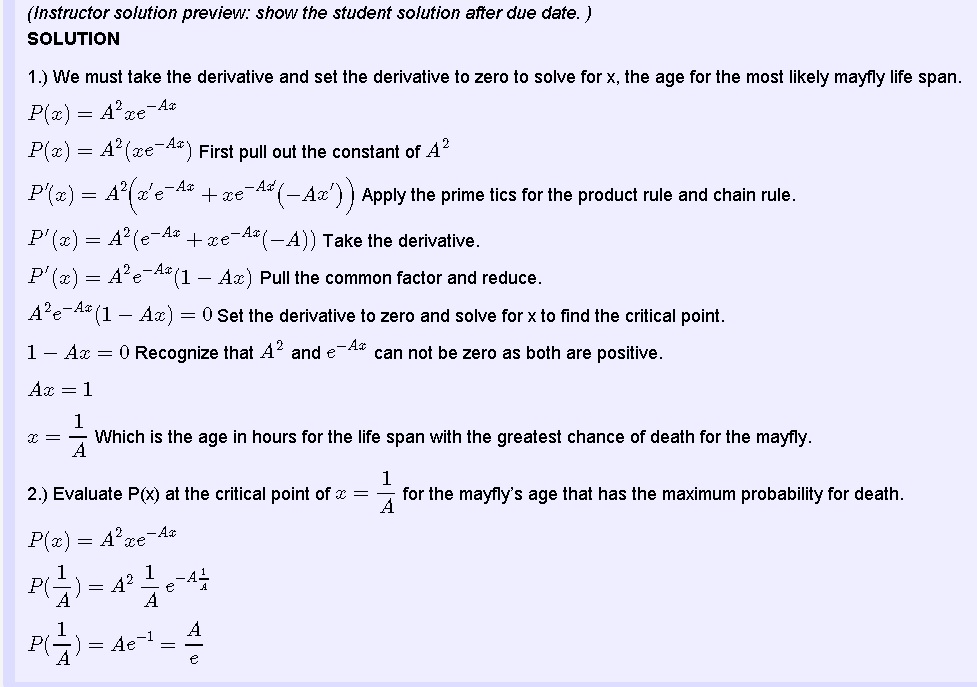Hi Tim,
You are writing your solution in list format, so why not use a list? In the code below are several examples of lists (an indented list, a bulleted list, and an enumerated list). The enumerated list seems to me like it would be the best fit for what you want.
I would discourage you from manual formatting, such as manually inserting several spaces, for a few reasons:
- Manual formatting is often an indication that you are not following proper writing style guidelines.
- As Davide Cervone pointed out last Monday, when manual formatting is necessary it is often a local and temporary fix for something that should be fixed globally and permanently by upgrading document templates (which are provided by macros, style sheets, etc.). If the manual formatting is left in a problem after a global solution has been implemented, the problem will "look bad" and need to be edited to remove the manual formatting you added. So, adding manual formatting now may mean more work for you later to remove it.
I think that your desire for manual formatting in this situation is an indication that you are not following proper writing guidelines. When writing, ask yourself, "Is this how it would be written in a good math textbook?" If the answer is no, then you're probably not following proper style guidelines. In your case, I think you should outline the steps of the solution using a list, and your list items should be complete sentences instead of a mathematical expression followed by a descriptive phrase that is not a complete sentence.
For the issue with the parentheses, there are commands \left and \right that you can put in front of symbols so that they are proportional to the other symbols around them. In particular, you should use [`` \left( \frac{a}{b} \right) ``] to get parentheses of the appropriate size for display-style math.
One last thing about webwork forum etiquette: Please post your code (all of it -- not just snippets). This makes it much easier for us to test your code and make suggestions. I have included some PG code below my signature that addresses your questions. (And, I had to spend time writing this code from scratch instead of copying your code and modifying it.) Also, it is good etiquette to have public discussions on the forum (rather than private ones via email) since forum discussions persist and are accessible to people who may have similar problems in the future.
Best regards,
Paul Pearson
#################### BEGIN PG CODE ##################
DOCUMENT();
loadMacros(
"PGstandard.pl",
"MathObjects.pl",
"PGchoicemacros.pl",
"PGML.pl",
"PGcourse.pl",
);
TEXT(beginproblem());
Context("Numeric");
###########################
# Main text
BEGIN_PGML
Click the solution link to see more.
END_PGML
############################
# Answer evaluation
install_problem_grader(~~&std_problem_grader);
$showPartialCorrectAnswers = 0;
#ANS( checkbox_cmp( $mc->correct_ans() ) );
############################
# Solution
BEGIN_PGML_SOLUTION
To find the age for the most likely mayfly life span, we maximize the
function [` P(x) = A^2 x e^{-Ax} `] by finding its critical points and
determining which, if any, provide the maximum value of the function.
First, factor the constant [`A^2`] to obtain [` P(x) = A^2 (x e^{-Ax}) `] .
Second, calculate the derivative using the product rule and chain rule to obtain
[`P'(x) = A^2(x' e^{-Ax} + x (e^{-Ax})') = A^2(e^{-Ax} - Ax e^{-Ax}) `].
- First, factor the constant [`A^2`] to obtain [` P(x) = A^2 (x e^{-Ax}) `] .
- Second, calculate the derivative using the product rule and chain rule to obtain
[`P'(x) = A^2(x' e^{-Ax} + x (e^{-Ax})') = A^2(e^{-Ax} - Ax e^{-Ax}) `].
1. Factor the constant [`A^2`] to obtain [` P(x) = A^2 (x e^{-Ax}) `] .
2. Calculate the derivative using the product rule and chain rule to obtain
[`P'(x) = A^2(x' e^{-Ax} + x (e^{-Ax})') = A^2(e^{-Ax} - Ax e^{-Ax}) `].
Notice the difference between [`` P(\frac{1}{A}) ``] and [`` P\left( \frac{1}{A} \right) ``].
END_PGML_SOLUTION
COMMENT('MathObject version. Uses PGML.');
ENDDOCUMENT();
###################### END PG CODE ##################

